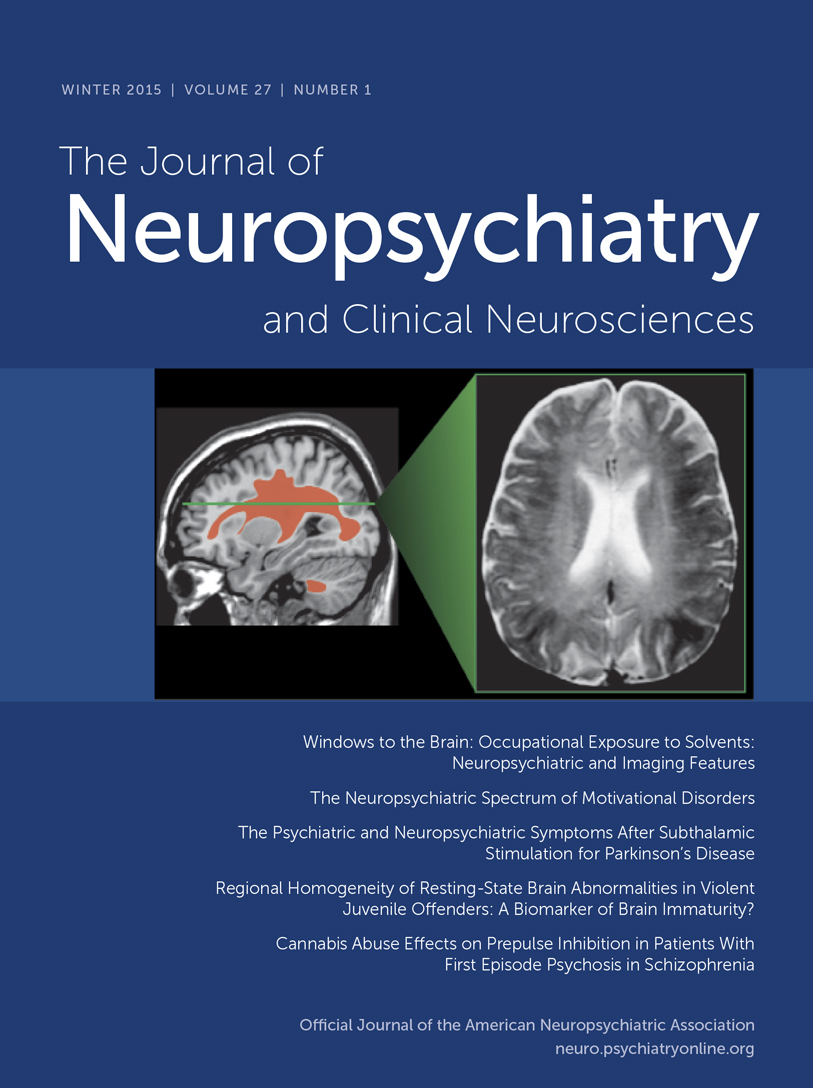Gabapentin Dependence in a Patient With Opioid Dependence Syndrome
To the Editor: Gabapentin, a GABA analog, originally developed to treat epilepsy, is currently being used in the treatment of various neuropsychiatric disorders.1 Gabapentin is used in treating various substance-induced withdrawal symptoms and craving.2 Its psychoactive effect predisposes it for recreational abuse.3 We report the development of gabapentin dependence in a patient with opioid dependence syndrome.
Case Report
“Mr. A,” 26-year-old unmarried man with premorbid externalizing spectrum disorder [attention deficit hyperactivity disorder (ADHD) and conduct symptoms], was introduced by his friends to propoxyphene at the age of 20. He started taking it out of curiosity but continued because of the positive effects. He increased the dose from 200 mg/day to 2.5 g/day in approximately 2–3 years. He started having cravings, tolerance, withdrawal symptoms, loss of control, and salience. Suddenly, he had to move to a Middle Eastern country for his job, where he was not able to get propoxyphene tablets. To control the withdrawal symptoms, he tried several medications but they did not help. One of his friends introduced him to gabapentin as an alternative. Initially, he titrated the dose of gabapentin from 400 mg/day to 2 g/day to control the withdrawal symptoms and cravings. This did not give him the same high as propoxyphene. However, eventually he experienced a sense of well-being, increased energy level, improved mood and sleep quality, and increased attention span as he increased the dose of gabapentin to 10–12 g/day. He started having withdrawal symptoms in the form of feeling agitated, low or irritable mood, and insomnia when he stopped the gabapentin. Over the next 2 years, he developed cravings, loss of control, and significant biological, social, occupational, family, and legal complications. In view of this, his family moved him back to India, where he was able to get propoxyphene again. He cross-tapered gabapentin with propoxyphene over a month. He came to us using 2.5 g propoxyphene/day. On evaluation, his adult ADHD Self-Report Scale4 score was 40. He had a strong family history of substance use disorders in two of his first-degree relatives. He was treated with a combination of buprenorphine maintenance treatment and atomoxetine 25 mg. After 3 months of follow-up, his ADHD Self-Report Scale score was 12, and he had no cravings for any of the substances. There was significant improvement noted in all domains of life by the patient and his family.
Discussion
We report this case to reiterate the following points: to our knowledge, this is the highest dose of gabapentin (10–12 g/day) abuse ever reported; gabapentin has the potential to be abused, especially in vulnerable population (therefore, health professionals need to excise caution while prescribing); the potential of gabapentin in treating opioid withdrawal symptoms needs to be examined systematically as it might be an alternative to opioid substitution therapy; and the vulnerable population needs to be managed holistically instead of with substance use disorder–specific treatment.
1 Neurontin monograph, in Compendium of Pharmaceuticals and Specialties (CPS). Edited by Repchinsky C. Ottawa, Canada, Canadian Pharmacists Association, 2008, pp 1512–1514Google Scholar
2 : New anticonvulsants: a review of applications for the management of substance abuse disorders. Ann Clin Psychiatry 2002; 14:233–245Crossref, Medline, Google Scholar
3 : A beneficial effect on mood in partial epilepsy patients treated with gabapentin. Epilepsia 1999; 40:1129–1134Crossref, Medline, Google Scholar
4 : The World Health Organization Adult ADHD Self-Report Scale (ASRS): a short screening scale for use in the general population. Psychol Med 2005; 35:245–256Crossref, Medline, Google Scholar



